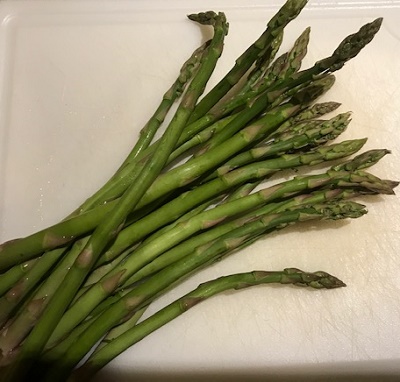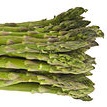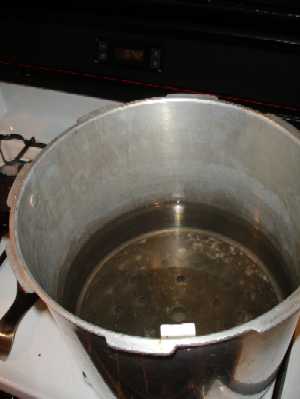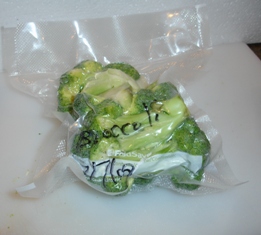
Looking for How to Freeze Asparagus - Easily! With Step-by-step Photos, Recipe, Directions, Ingredients and Costs in 2025? Scroll down this page and follow the links.
And if you bring home some fruit or vegetables and want to can, freeze, make
jam, salsa or pickles, see this
page for simple, reliable, illustrated canning, freezing or preserving
directions. There are plenty of other related resources, click on the resources dropdown above. If you are having a hard time
finding
canning lids, I've used these, and they're a great price &
ship in 2 days.
If you have questions or feedback, please let me know! There
are affiliate links on this page. Read our disclosure policy to learn more.
How to Freeze Asparagus - Easily! With Step-by-step Photos, Recipe, Directions, Ingredients and Costs
 How to Freeze Asparagus
How to Freeze Asparagus
PDF print
version
If you like frozen asparagus in the winter, just imagine how good it would
taste if you had picked a head yourself and then quickly froze it at home!
It is also one of the simplest ways to put up a vegetable for the winter.
Here's
how to do it, complete instructions in easy steps and completely illustrated.
The asparagus will taste MUCH better than anything you've ever had from a store.
Directions for Freezing Asparagus
Ingredients
Equipment
- 1 Large pot of boiling water
- 2 large bowls, one filled with cold water and ice.
- 1 sharp knife
- Vacuum food sealer or "Ziploc" type freezer bags (the freezer bag
version is heavier and protects better against freezer burn.
Instructions
Step 1 - Get the asparagus!
This
is the most important step! You need asparagus that is FRESH and
crisp. Limp, old asparagus will make nasty tasting frozen
asparagus. Look for young, tender, firm, crisp asparagus spears
Asparagus are of the best quality when they are tight, before the tips
start to open.
How much asparagus and where to get it
You can grow your own, pick your own, or buy it at the grocery store.
Start with fresh asparagus - as fresh as you can get.
Step 2
- Wash the asparagus!

I'm sure you can figure out how to rinse the asparagus in
plain cold water.
Step 3 -Trim the asparagus
Sort into sizes, by diameter (thick, say half inch diameter) stalks require
longer blanching than pencil sized spears. Trim stalks by removing scales with a
sharp knife. Cut into even lengths to fit your freezing containers.
Step 4- Get the pots ready
 Get
the pot of boiling water ready (about 2/3 filled) and a LARGE bowl with
ice and cold water. Use one gallon water per pound of prepared asparagus
in each blanching batch.
Get
the pot of boiling water ready (about 2/3 filled) and a LARGE bowl with
ice and cold water. Use one gallon water per pound of prepared asparagus
in each blanching batch.
Step 5 - Blanch the asparagus.
All fruits and vegetables contain enzymes and bacteria
that, over time, break down the destroy nutrients and change the color,
flavor, and texture of food during frozen storage. asparagus requires a
brief heat treatment, called blanching, in boiling water or steam,
to destroy the enzymes before freezing. Blanching times for asparagus is:
- small spears(the thickness of a pencil) 2 minutes,
- medium spears 3 minutes and
- large spears (a half inch or more in diameter) 4 minutes.
These durations are just
long enough to stop the action of the enzymes and kill the bacteria.
- Put the vegetables in a blanching basket and lower into vigorously
boiling water.
- Place a lid on the blancher.
- The water should return to boiling within 1 minute, or you are using
too much vegetable for the amount of boiling water.
- Start counting blanching time as soon as the water returns to a
boil. Keep heat high for the time given in the above.
You may use the same
blanching water several times (up to 5). Be sure to add more hot water
from the tap from time to time to keep the water level at the required
height.
Step 6 - Cool the asparagus
Cool
asparagus immediately in ice water. Drain the asparagus thoroughly (this
shouldn't take more than a minute).
After vegetables are blanched, cool them quickly to prevent
overcooking. Plunge the asparagus into a large quantity of ice-cold water
(I keep adding more ice to it). A good rule of thumb: Cool for the same
amount of time as the blanch step. For instance, if you blanch the asparagus for 3 minutes, then
you should cool it in ice water for at least 3 minutes.
Drain thoroughly.

Step 7 - Bag the asparagus
I
love the FoodSavers (see
this page for more information) with their vacuum sealing! I am
not paid by them, but these things really work. If you don't have
one, Ziploc bags work, too, but it is hard to get as much air out of the
bags. Remove the air to prevent drying and freezer burn. TIP:
If you don't own a vacuum food sealer to freeze foods, place food in a
Ziploc bags, zip the top shut but leave enough space to insert the tip of
a soda straw. When straw is in place, remove air by sucking the air out.
To remove straw, press straw closed where inserted and finish pressing the
bag closed as you remove straw.
Step
8 - Done!
Pop them into the freezer, on the quick freeze shelf, if you have one!
Freezing keeps
asparagus safe to eat almost indefinitely, but the recommended
maximum storage time of 12 months is best for taste and quality. The quality of the
frozen asparagus is maintained best in a very cold freezer (deep freezer),
and one that keeps them frozen completely with no thaw cycles. Excluding any
air from inside the bags which leads to freezer burn, by using vacuum-sealed
bags, is also important to maintaining quality.
I love the FoodSavers (see
this page for more information) with their vacuum sealing! Here's
an example of one model:
FoodSaver Vacuum food sealers advanced Design
This one is the least expensive of the Food Saver models that has all the
advanced features, like automatic bag detection and sealing, which makes it
faster and easier to seal. And yes, you can seal and freeze foods with
liquids (just freeze the unsealed bag in the freezer overnight, THEN seal
it!)
Features
- Home vacuum-packaging system vacuums, seals, and shuts off
automatically
- Upright vacuum-sealing
appliance with SmartSeal technology keeps food fresh longer
- Push-button operation;
built-in roll storage and cutter; automatic liquid detection
- Crush-free instant seal;
2 vacuum speeds; 2 seal levels; progress lights; integrated
bag opener
- Marinate and canister
modes; includes 3 quart-size bags, 2 gallon-size bags, and a
roll of bag material
- Measures approximately 6
by 18-8/9 by 10-2/5 inches; 1-year limited warranty
The blanching times presented are was based on the Ball Blue
Book Guidelines and "So Easy to Preserve", 5th ed. 2006.
Bulletin 989, Cooperative Extension Service, The University of
Georgia, Athens. Revised by Elizabeth L. Andress. Ph.D. and Judy
A. Harrison, Ph.D., Extension Foods Specialists.
More About Blanching
Blanching (scalding vegetables in boiling water or steam for
a short time) is a must for almost all vegetables to be frozen.
It stops enzyme actions which can cause loss of flavor, color
and texture.
Blanching cleanses the surface of dirt and
organisms, brightens the color and helps retard loss of
vitamins. It also wilts or softens vegetables and makes them
easier to pack.
Blanching time is crucial and varies with
the vegetable and size. Underblanching stimulates the activity
of enzymes and is worse than no blanching. Overblanching causes
loss of flavor, color, vitamins and minerals.
There are different types of blanching
For home freezing, the most satisfactory way to heat all
vegetables is in boiling water, although in a few cases, steam
blanching makes more sense. Use a blancher (a large pot with a
sieve / strainer pocket insert) which has a blanching basket and
cover, or fit a wire basket into a large pot with a lid.
|
Tips:
- Harvest early in the morning, especially if the weather is hot, to get
peak flavor.
- Harvest the asparagus at its peak maturity (firm, straight, no florets
opening, dark green, not yellowing)
- Process promptly after harvesting, or keep cooled in the fridge or with
ice until then.
Frequently Asked Questions
- I've frozen asparagus but it seem so limp and fell apart. Any idea why?
Generally, that means the asparagus was overcooked. It only takes 90 seconds
in steam or boiling water to heat/cook the asparagus after removing it from
the freezer
- How long can they be frozen?
It depends upon how cold is your freezer and how you packed them. Colder
(deep freezes) are better than frost free compartments, which actually cycle
above freezing (that's how they melt the ice). Vacuum packing results in
longer storage capability, too. Thicker bags also help prevent freezer
burn.
In general, up to 9 months in a Ziploc bag in an ordinary freezer, and 14
months in a deep freeze in a vacuum packed bag. After that, they
asparagus
won't make you sick; they just won't taste a s good.

 How to Freeze Asparagus
How to Freeze Asparagus

 Get
the pot of boiling water ready (about 2/3 filled) and a LARGE bowl with
ice and cold water. Use one gallon water per pound of prepared asparagus
in each blanching batch.
Get
the pot of boiling water ready (about 2/3 filled) and a LARGE bowl with
ice and cold water. Use one gallon water per pound of prepared asparagus
in each blanching batch.

